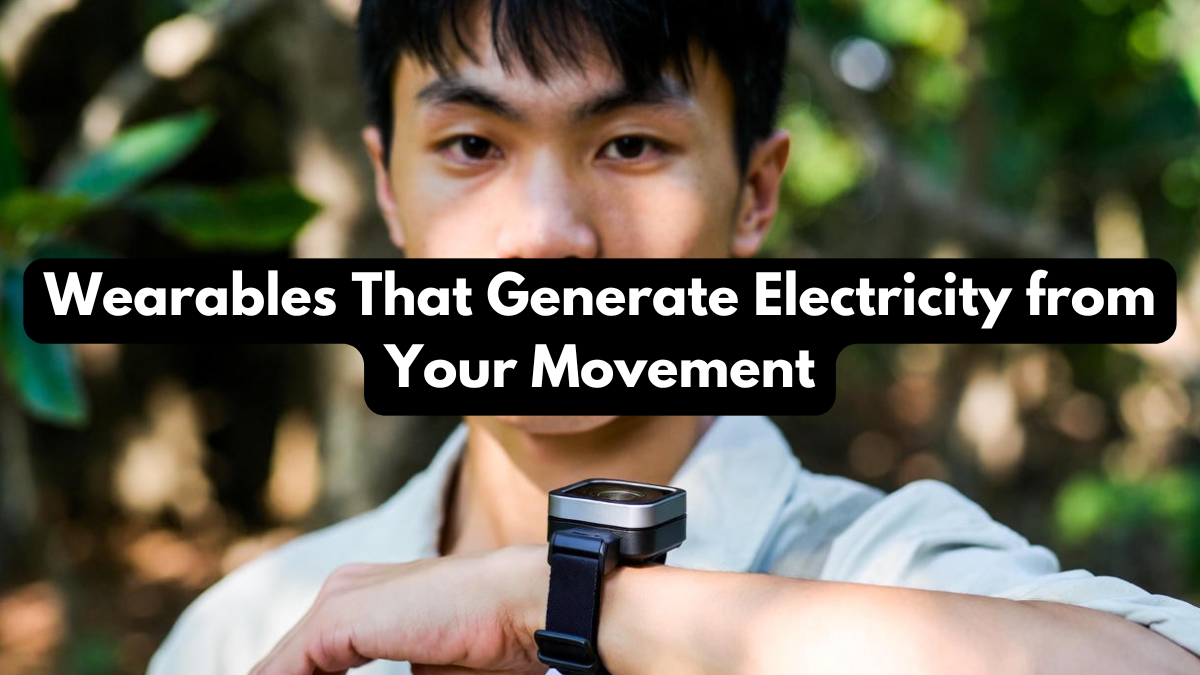The rise of kinetic wearables is transforming how people power their everyday devices. Instead of relying on traditional chargers, users can now generate electricity simply by walking, jogging, or performing routine movements. Thanks to advancements in motion charging tech, wearables can convert kinetic energy into electrical power, making gadgets more sustainable, efficient, and convenient. As individuals look for eco-friendly and portable power solutions, these next-generation wearables are creating new possibilities for fitness, healthcare, and mobile technology.

How Kinetic Wearables Work
Modern kinetic wearables use sensors, microgenerators, and piezoelectric materials to capture energy produced by body movement. Every step, arm swing, or motion creates mechanical pressure that is converted into electrical energy. This is made possible through sophisticated motion charging tech, which harnesses kinetic output and stores it in small built-in batteries.
These wearables can be integrated into smartwatches, fitness trackers, shoes, clothing, or accessories. The more active the user is, the more power is produced. Some devices use electromagnetic generators, while others rely on flexible piezoelectric materials embedded in fabric. With continued advancements in motion charging tech, even small movements—such as typing, stretching, or blinking—could eventually generate usable energy.
Benefits of Movement-Based Charging
The adoption of kinetic wearables brings remarkable advantages for consumers who want portable, eco-friendly, and hassle-free energy sources. With the help of motion charging tech, users no longer have to worry about carrying cables or finding outlets to recharge small devices. These wearables offer a clean and renewable power source that aligns perfectly with sustainable living.
Key benefits include:
- Eco-friendly energy generation
- Reduced need for traditional charging
- Continuous power supply during daily activities
- Convenient and portable energy harvesting
- Longer battery life for wearables and small electronics
- Integration with fitness and health tracking
- Enhanced durability through motion charging tech
These advantages make kinetic wearables appealing for athletes, travelers, outdoor adventurers, and anyone seeking sustainable power solutions.
Table: Traditional Battery Usage vs Kinetic Wearable Power
| Feature | Traditional Battery Devices | Kinetic Wearables |
|---|---|---|
| Power Source | Charging cable | Body movement using motion charging tech |
| Sustainability | Limited | Highly eco-friendly |
| Convenience | Must recharge manually | Generates power automatically |
| Battery Lifespan | Finite | Extended with continuous charging |
| Use in Remote Areas | Challenging | Ideal due to movement-based power |
| User Dependency | High | Low thanks to kinetic wearables |
This comparison shows how movement-powered wearables outperform traditional devices in convenience, sustainability, and long-term efficiency.
Applications of Kinetic Wearables
The versatility of kinetic wearables makes them valuable across multiple industries. Fitness enthusiasts can power their devices while exercising, ensuring their trackers never run out of battery. Healthcare monitoring devices equipped with motion charging tech can support continuous data collection without frequent charging interruptions.
Outdoor adventurers benefit greatly from kinetic wearables, as these devices provide power in remote or off-grid areas. Military personnel, hikers, and emergency responders can use wearables that generate electricity to power flashlights, communication tools, or sensors. Additionally, future clothing lines may include smart fabrics that charge phones or wearables through movement.
The Future of Motion Charging Tech
The future of kinetic wearables looks promising as researchers push the boundaries of motion charging tech. Next-generation devices may use ultra-thin, flexible nanogenerators embedded in clothing or accessories. This could enable entire outfits to generate electricity by capturing energy from walking or even subtle vibrations.
Upcoming advancements may include:
- Smart shoes that fully power fitness trackers
- Clothing-based generators for phones and earbuds
- Self-powered medical sensors and implants
- Off-grid wearable chargers for travelers
- Enhanced piezoelectric materials with higher output
- Motion-powered AR glasses or communication devices
With continued innovation, kinetic wearables may become a primary energy source for small electronics.
Conclusion
The rise of kinetic wearables is ushering in a new era of self-powered technology. By harnessing the potential of motion charging tech, these devices offer renewable energy, unmatched convenience, and sustainable power for daily life. Whether used for fitness, healthcare, travel, or everyday wear, movement-based charging provides a practical alternative to traditional power sources. As research progresses, kinetic wearables will continue to evolve—making energy generation as natural as taking a step.
FAQs
How do kinetic wearables generate electricity?
They convert body movement into electrical energy using motion charging tech.
Do kinetic wearables replace traditional chargers?
They significantly reduce dependence on chargers, especially for low-power devices.
Are kinetic wearables suitable for outdoor use?
Yes, kinetic wearables are ideal for hiking, camping, and remote environments.
Can kinetic wearables store energy for later use?
Most devices include small batteries that store energy created through motion charging tech.
Will kinetic wearables become widely used in the future?
As technology advances, kinetic wearables are expected to become more common in everyday life.
Click here to know more.